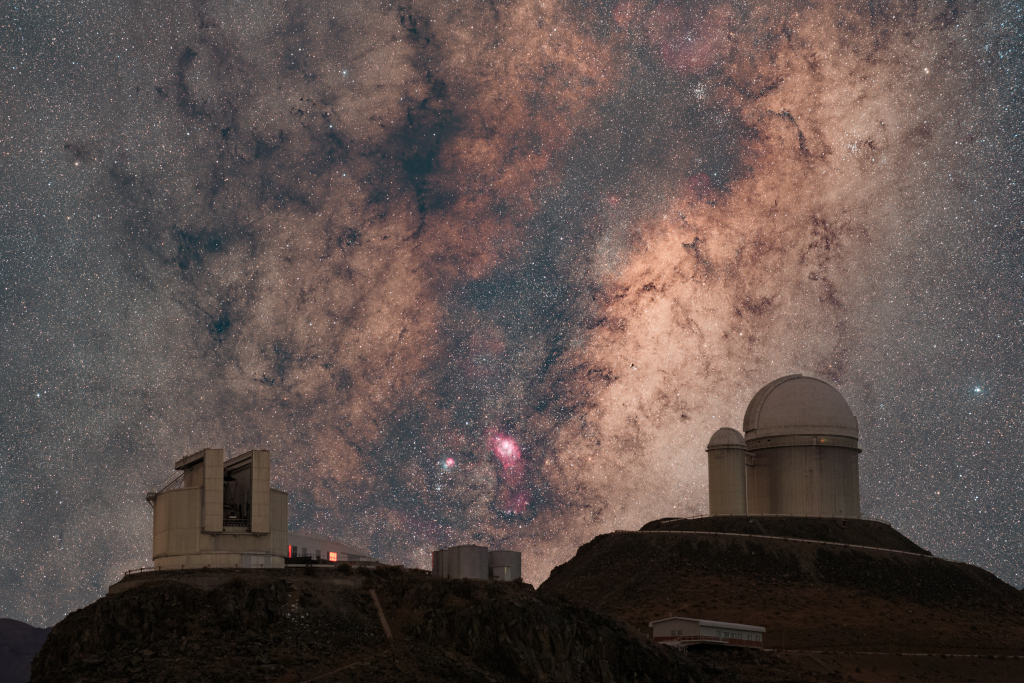NASA published an amazing photo showing how the Milky Way rose above the La Silla Observatory, located in Chile. The image shows huge telescopes against the background of dark and light gas and dust clouds that hide the core of our galaxy from us.

Telescopes against the background of the Galaxy’s core
On December 1, NASA published an amazing photo of the Milky Way. It rises above the La Silla Observatory, located in Chile. It is part of the European Southern Observatory and one of the best places on Earth for stargazing. It is located in the Atacama Desert at a high altitude above sea level.
Thanks to this, the sky here is always very clear and extremely transparent. Due to this, as many as 18 modern telescopes are located here. Two of them are in the photo. On the left is the New Technology Telescope of the European Southern Observatory, which has pioneered the use of adaptive optics to accurately control the shape of large mirrors.
On the right is the 3.6-meter ESO telescope, where the HARPS and NIRPS spectrographs are located. They are designed to hunt exoplanets. And between the two astronomical instruments is not just the Milky Way, but the part of it where the center of our Galaxy is hidden.
Center of the galaxy
The center of the Galaxy is located in the direction of the constellation Sagittarius. If you look at the usual belt of the Milky Way, then at this point you can see that it is torn. These are dark nebulae that hide the supermassive black hole and everything that surrounds it from us.
The published photo is actually a combination of several pictures taken back in April of this year. Details that are usually not visible are clearly visible on it. The red light visible in the middle is the Lagoon Nebula, also known as M8.
To the right of it is the Trifid Nebula, or M20. It is easy to recognize it by the blue light. The distance to it, according to various estimates, ranges from 2 to 8 thousand light-years. Besides them, numerous stars and clusters are visible in the photo.
According to apod.nasa.gov
Follow us on Twitter to get the most interesting space news in time
https://twitter.com/ust_magazine


